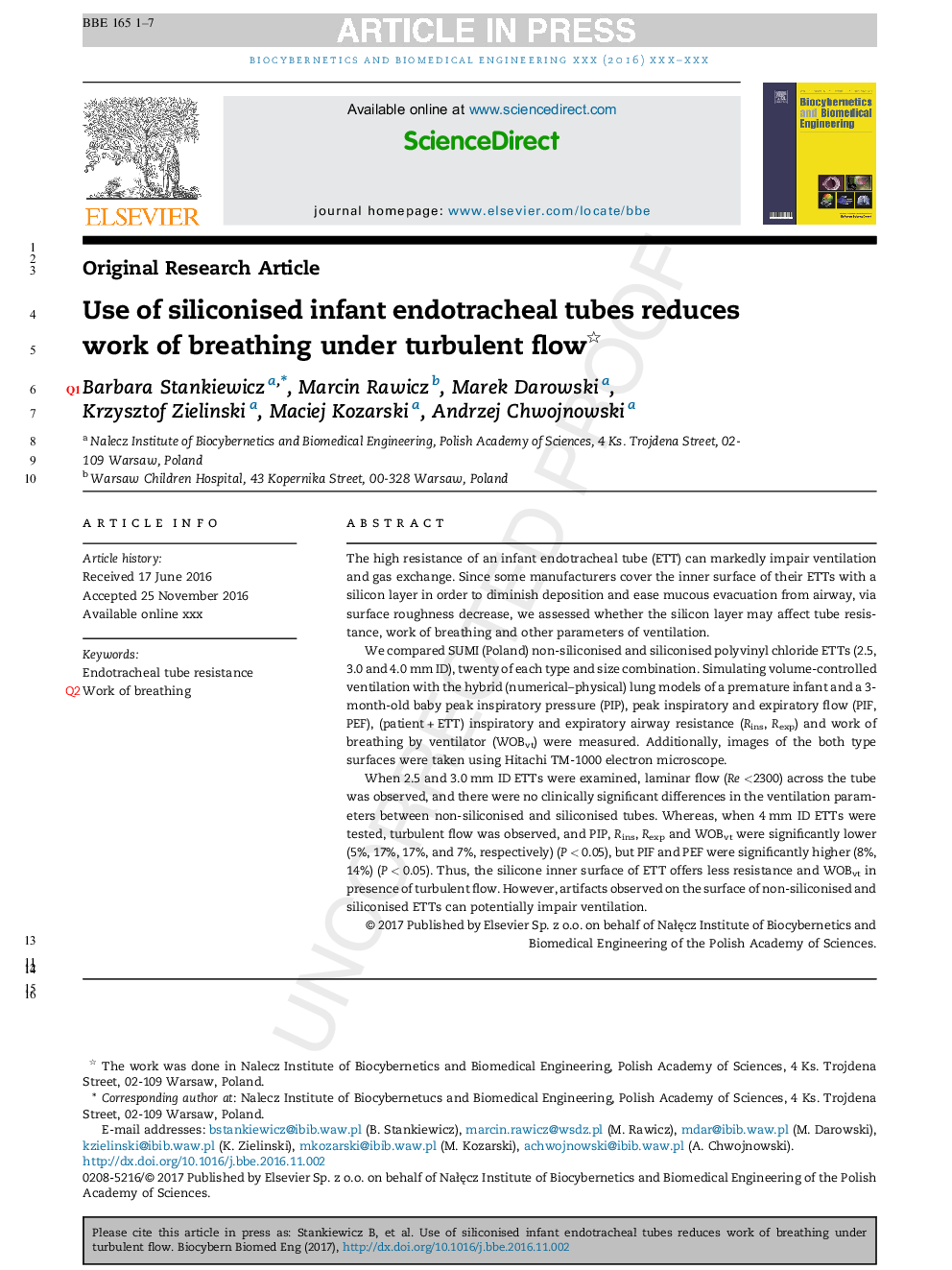| Article ID | Journal | Published Year | Pages | File Type |
|---|---|---|---|---|
| 6484246 | Biocybernetics and Biomedical Engineering | 2017 | 7 Pages |
Abstract
When 2.5 and 3.0Â mm ID ETTs were examined, laminar flow (Re <2300) across the tube was observed, and there were no clinically significant differences in the ventilation parameters between non-siliconised and siliconised tubes. Whereas, when 4Â mm ID ETTs were tested, turbulent flow was observed, and PIP, Rins, Rexp and WOBvt were significantly lower (5%, 17%, 17%, and 7%, respectively) (PÂ <Â 0.05), but PIF and PEF were significantly higher (8%, 14%) (PÂ <Â 0.05). Thus, the silicone inner surface of ETT offers less resistance and WOBvt in presence of turbulent flow. However, artifacts observed on the surface of non-siliconised and siliconised ETTs can potentially impair ventilation.
Keywords
Related Topics
Physical Sciences and Engineering
Chemical Engineering
Bioengineering
Authors
Barbara Stankiewicz, Marcin Rawicz, Marek Darowski, Krzysztof Zielinski, Maciej Kozarski, Andrzej Chwojnowski,
